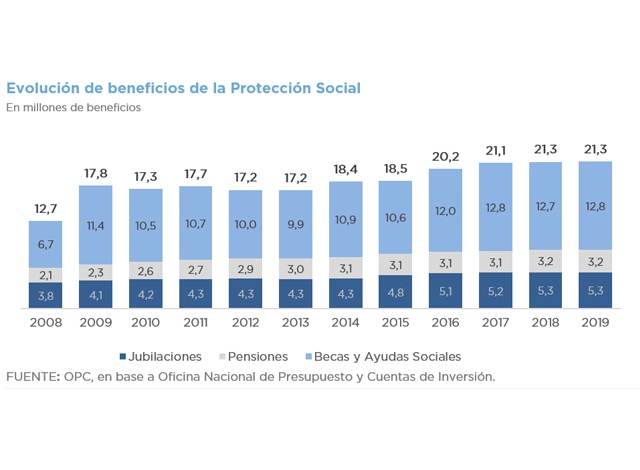Over the last decade, monetary transfers to individuals and households were consolidated as an instrument of social policy and grew from 39% to 47% of government spending. Due to pension moratoriums, disability pensions and Universal Child Allowance (AUH), non-contributory and semi-contributory benefits gained relative weight.
- Since 2008, transfers grew steadily in terms of GDP and peaked in 2017 at 11.3%. From that year onwards they declined by approximately one percentage point until 2019.
- The number of benefits grew from 12.7 to 21.3 million between 2008 and 2019.
- The number of households receiving monetary benefits increased from 2.5 million to 6.6 million.
- Children under 18 years of age were the main recipients.
- In the term 2008-2019, unemployment insurance covered an average of 9% of the unemployed.
- Pension moratoriums involve an expenditure of 2.6% of GDP and 3.6 million people have been able to access Social Security benefits through a pension moratorium.
- The non-contributory subsystem is the one that provides the largest number of benefits, with a total of 10.1 million in 2019, but with an expenditure of 2.1% of GDP.
- The significant economic and social effects related to the current global health crisis may require the restructuring of the Argentine social protection system to guarantee the effective enjoyment of the population’s rights.

